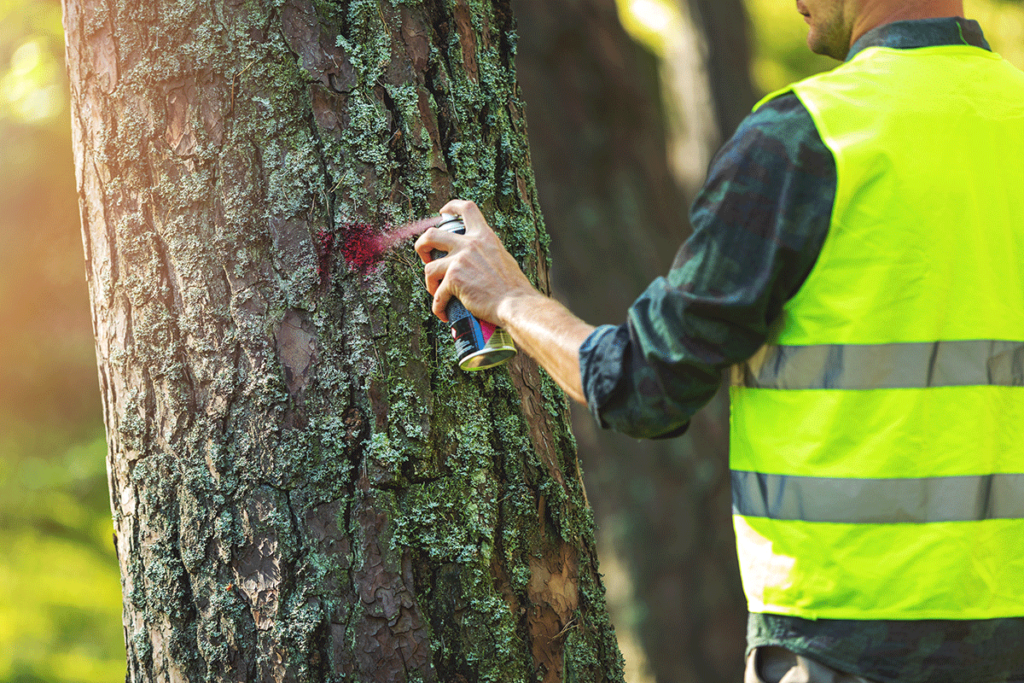Keeping trees healthy by ensuring enough water, nutrients, and sunlight is hard work. When tree diseases affect your plants, it’s essential to recognize and treat the condition as soon as possible by calling in tree disease experts. An illness affecting one tree can spread to other nearby trees, and some infections can be fatal. Certified arborists are trained and knowledgeable in the right tree disease treatment for the issues affecting your trees. Call 240.281.3334 to find help from a Maryland arborist now.
Common Tree Diseases
Tree diseases can cause significant damage to your trees, landscape, and even your property. With the right conditions, these diseases can quickly spread from tree to tree, causing widespread devastation. It’s essential to keep an eye out for signs of common tree diseases so you can address them promptly and prevent further damage.
Here are some of the most prevalent tree diseases in the Mid-Atlantic:
- Beech leaf disease
- Fire blight
- Anthracnose
- Apple scab
- Dutch elm disease
Understanding tree disease treatment procedures is a major part of a certified arborist’s job. They can identify the specific disease affecting your trees and recommend the best course of action to save them.
5 Common Tree Disease Treatments
1. Pruning or Removing Damaged Parts
Pruning, or cutting and removing parts of a tree, is one of the most effective methods to treat tree disease. Timely pruning can keep fungi and other diseases from spreading to the trunk and vital parts of the tree.
- You can remove leaves with growths or galls that spread fungal spores for certain fungal infections.
- Treat black knot disease by pruning infected twigs and branches.
- Treat powdery mildew by removing tree parts with the mildew’s white, powdery residue or pruning infected leaves that turn yellow or brown.
- You can treat citrus gall wasp by pruning swollen branches.
- Anthracnose can be treated early by cutting off infected or dead twigs, branches, and leaves from the tree.
Some diseases do not require pruning and respond well to chemical treatment.
2. Chemical Tree Treatment
Natural tree disease treatments can help cure several conditions, especially if the disease is caught early. More stubborn or longer-lasting tree diseases, however, may need chemical treatments. Chemicals can kill infections and stop the diseases from recurring next season.
Copper-based fungicides are successful at treating many tree illnesses, such as:
- Anthracnose
- Powdery mildew
- Needle blight
- Shoot fungus
- Cedar-apple rust
Chemicals like sulfur or fenarimol can also be effective in fungicides.
3. Tree Removal
If an illness affects the tree’s root systems or spreads through the entire tree, it can sometimes be fatal. In that case, the best way to treat tree disease is to remove the whole tree.
When oak trees get oak wilt—a fungus spread by sap beetles—the fungus can spread through root systems. Removing the infected tree, including its roots and stump, is the only way to ensure the infection doesn’t pass to other trees.
Cypress canker is another tree disease that can spread through branches to infect a whole tree. Once the entire tree is affected, a team of professionals should remove it.
4. Loose Planting for Air Circulation
Often, the best way to treat tree disease is to prevent it from happening in the first place. Many tree illnesses spread in shady, humid environments without much airflow. To keep your trees healthy:
- Plant trees at a distance from one another so air can circulate between them.
- Trim trees and shrubs regularly so leaves don’t block airflow.
- Make sure your trees can access plenty of sunlight.
Loose planting and constant air circulation can keep tree diseases like powdery mildew and needle blight from developing.
5. Improving Plant Irrigation
Healthy trees are less likely to become infected, and good irrigation is essential to keep trees healthy. Help your trees fight off disease by:
- Watering trees at ground level, keeping the trunk and foliage dry
- Watering trees at their dripline away from the trunk
- Avoiding over-watering
- Providing good drainage
- Keeping overhead sources of water, like sprinklers, away from trees
Keeping excessive moisture away from trees and foliage can prevent many kinds of spores and fungi from spreading through trees.
Treat Tree Diseases by Calling Prestige Tree Experts
Our goal at Prestige Tree Experts is to provide top-quality tree disease treatment that keeps your property in excellent condition. If you’re unsure which treatment to apply, our arborists and professionals will give you expert help. We can advise you on tree maintenance, pruning techniques, and disease prevention. We’ll complete the job efficiently and safely if you need to remove an infected tree. Reach out to us at 240.281.3334 or message us online to find out which standard tree disease treatment is best for your trees.

